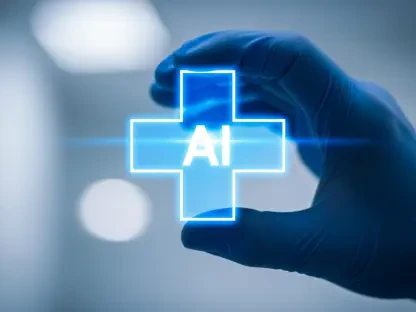The Covid-19 pandemic has profoundly impacted various sectors, with healthcare administration experiencing significant transformations. The crisis exposed systemic vulnerabilities, particularly in human resources (HR) and staffing, compelling the industry to adopt long-overdue technological innovations.
Pre-Pandemic Resistance to Technology
Manual Processes and Inefficiencies
Before the pandemic, healthcare administration was notorious for its resistance to technological advancements. Many administrative functions, including HR processes, patient records, and scheduling, relied heavily on manual, paper-based systems. This reliance on outdated methods led to inefficiencies such as laborious data entry, frequent human errors, and significant data-sharing challenges. The cumbersome and error-prone nature of these processes often resulted in delayed treatments, miscommunications, and other operational setbacks that hampered overall efficiency.
The healthcare sector’s general reluctance to embrace technology stemmed from multiple reasons, including budget constraints, lack of technical knowledge, and a preference for traditional ways of working. However, the global health crisis highlighted the unsustainability of these outdated methods. The manual handling of patient information became increasingly impractical as healthcare facilities were inundated with Covid-19 cases, necessitating a more streamlined and automated approach to manage the immense influx of data and demands.
The Need for Change
The pandemic’s chaos, characterized by unprecedented patient influxes, resource shortages, and staff burnout, highlighted the urgent need for rapid information dissemination. This urgency forced healthcare administrators to reconsider their stance on technology, leading to a swift integration of digital solutions. The traditional systems could no longer support the sudden surge in demand for healthcare services, and the need for immediate and effective solutions became glaringly apparent.
Faced with these challenges, the healthcare sector pivoted toward technological integration to enhance administrative efficiency and patient care. The swift adoption of new technologies not only addressed immediate needs but also paved the way for a more sustainable and effective healthcare administration framework. The willingness to transition from manual to digital processes marked a significant paradigm shift, driven by the imperative to improve outcomes and keep up with the relentless pace of the crisis.
Technological Integration During the Pandemic
Enhanced Data Management
Electronic Health Records (EHRs) became essential during the pandemic, streamlining patient data handling and reducing paperwork. EHRs facilitated crucial information sharing, minimized medical errors, and improved patient outcomes by enhancing disease management and education. Advanced data management systems allowed healthcare providers to efficiently collect, analyze, and disseminate information, ensuring that critical details were accessible in real time.
The switch to EHRs proved beneficial in managing the chaotic influx of patient data during the pandemic, significantly reducing the burden of manual documentation. These systems enabled healthcare professionals to focus more on patient care rather than administrative tasks, resulting in better health outcomes. Additionally, the ability to track patient history and treatment plans electronically helped in the efficient management of resources and provided a more coordinated approach to care.
Predictive Analytics and AI
The integration of Artificial Intelligence (AI) and machine learning enriched data management systems, enabling predictions of patient influx, understanding disease trends, and managing resources adeptly. Predictive analytics could forecast potential outbreaks and staffing requirements, allowing hospitals to allocate resources judiciously and avoid overburdening their workforce. This capability was critical in both the planning and operational stages of pandemic response, providing actionable insights that could save lives.
The application of AI further extended to enhancing diagnostic accuracy and treatment plans, ensuring that the best decisions were made based on comprehensive data analysis. Machine learning models could analyze vast datasets to identify patterns, leading to improved patient care strategies and more effective public health interventions. These technological advancements underscored the value of data in transforming healthcare administration, turning it into an informed and proactive system.
The Rise of Telemedicine
Remote Consultations
The pandemic significantly boosted telemedicine usage, enabling healthcare providers to consult patients remotely and reduce virus transmission risks. Telemedicine also streamlined administrative tasks, lessening the workload on healthcare workers. For instance, virtual consultations provided immediate care while minimizing exposure to the virus, catering to patients who needed non-emergency services.
By incorporating telemedicine, healthcare systems could maintain continuity of care while adhering to social distancing guidelines. This shift not only protected patients and healthcare workers but also expanded access to healthcare services for those in remote or underserved areas. The virtual consultations played a pivotal role in managing patient flow, and emergency rooms remained reserved for critical cases, ensuring more efficient use of medical resources.
Expanding Telemedicine Services
Healthcare providers can broaden telemedicine services to include virtual consultations, remote patient monitoring, and digital prescription services. By investing in robust telemedicine platforms, providers can enhance patient engagement, cut costs associated with in-person visits, and improve care access, particularly in underserved regions. This expansion will likely continue post-pandemic, driven by the realized benefits and patient preferences for convenient care options.
The successful implementation of telemedicine during the pandemic established a blueprint for future healthcare delivery models. The integration of telehealth with traditional services can create a hybrid approach, making healthcare more accessible and comprehensive. This progressive model could bridge gaps in the current system, effectively blending technology with patient-focused care.
Staffing and Resource Management
Digital HR Technologies
The pandemic accelerated the adoption of digital HR technologies, facilitating efficient staff allocation, shift management, and compliance with working hour regulations. Automating these processes freed administrative staff from manual scheduling tasks, allowing them to concentrate on strategic responsibilities. This transition was crucial in managing the workforce effectively during times of crisis, ensuring that healthcare facilities operated smoothly despite the challenges.
Advanced HR platforms provided real-time data on staffing levels, helping managers make informed decisions about deploying personnel where they were needed most. These technologies also assisted in maintaining compliance with labor laws and safety guidelines, essential in protecting healthcare workers during the pandemic. The efficiency gained from automation allowed for better resource utilization and improved overall operational effectiveness.
Advanced Scheduling Software
Advanced scheduling software and workforce management systems, powered by real-time data and predictive analytics, optimized staff allocation and adjusted swiftly to changing demands. Integration of these systems with telemedicine and data management tools ensured a seamless operational flow, enabling healthcare facilities to respond promptly to evolving conditions. These tools were vital in coping with the dynamic and often unpredictable nature of pandemic-related demands.
Such systems could predict peak times, identify potential staffing shortages, and facilitate swift adjustments to schedules. By leveraging data-driven insights, healthcare administrators could mitigate risks such as staff burnout and ensure that care delivery remained uncompromised. The harmonious blending of technology with operational strategy underscores a transformative shift towards a more resilient and adaptive healthcare infrastructure.
Cybersecurity Risks
Increased Vulnerability
The increased reliance on digital technologies brought heightened vulnerability to cybersecurity threats. Data breaches, ransomware attacks, and unauthorized access to sensitive patient information posed significant risks. Healthcare organizations must employ robust cybersecurity measures to protect patient data, as any compromise in data security could severely impact patient trust and safety.
Cyber attacks during the pandemic highlighted the vulnerabilities present in hurriedly adopted digital infrastructures. As healthcare entities expanded their online presence, new vectors for cyber threats emerged, necessitating comprehensive security frameworks. Protecting electronic patient information became paramount, and organizations were compelled to adopt stringent security protocols to safeguard against potential breaches.
Implementing Security Measures
To mitigate these risks, healthcare organizations should implement encryption techniques, multifactor authentication (MFA), secure backups, and regular vulnerability assessments. Balancing the benefits of digital transformation with unwavering attention to data security is crucial for maintaining the confidentiality and integrity of patient information. Proactive measures in cybersecurity not only protect sensitive data but also fortify the trust between patients and healthcare providers.
Regular staff training on cybersecurity best practices and incident response protocols is essential in creating a resilient defense mechanism against cyber threats. By fostering a culture of security awareness and preparedness, healthcare organizations can minimize risks and ensure that the technological advancements made continue to benefit patient care without compromising on safety.
Future of Healthcare Administration
Permanent Technological Adoption
As the healthcare sector transitions into the post-pandemic era, the adoption of these technologies is poised to become a permanent fixture. Embracing digital transformation as a progressive, ongoing process will be essential for sustaining improvements in efficiency, patient care, and resource management. The rapid technological integration experienced during the pandemic has set a precedent for continuous innovation and adaptation in healthcare administration.
The lessons learned from the crisis have fundamentally reshaped perceptions of technology’s role in healthcare. Moving forward, the emphasis will likely remain on leveraging digital tools to create a more responsive and resilient system capable of managing future health emergencies. This paradigm shift promises to usher in an era marked by increased operational efficiency and patient satisfaction.
Continuous Investment and Refinement
The Covid-19 pandemic has greatly impacted numerous sectors, most notably healthcare administration, resulting in substantial changes. The crisis revealed significant weaknesses within the system, especially in the areas of human resources (HR) and staffing. These challenges forced the healthcare industry to implement much-needed technological advancements that had been delayed for too long.
Healthcare facilities found themselves struggling with insufficient staff and resources, which emphasized the necessity for efficient HR practices and innovative staffing solutions. Remote work, telehealth, and digital patient records became more prevalent, showcasing the importance of technology in maintaining healthcare services during crises.
The shift toward technology not only helped address immediate staffing shortages but also paved the way for long-term improvements in the industry. As healthcare organizations adapted to these innovations, they realized that these changes could enhance their overall efficiency and patient care, even beyond the pandemic. The experience underscored the vital need for continuous investment in technological advancements to better prepare for future emergencies and improve healthcare delivery.









